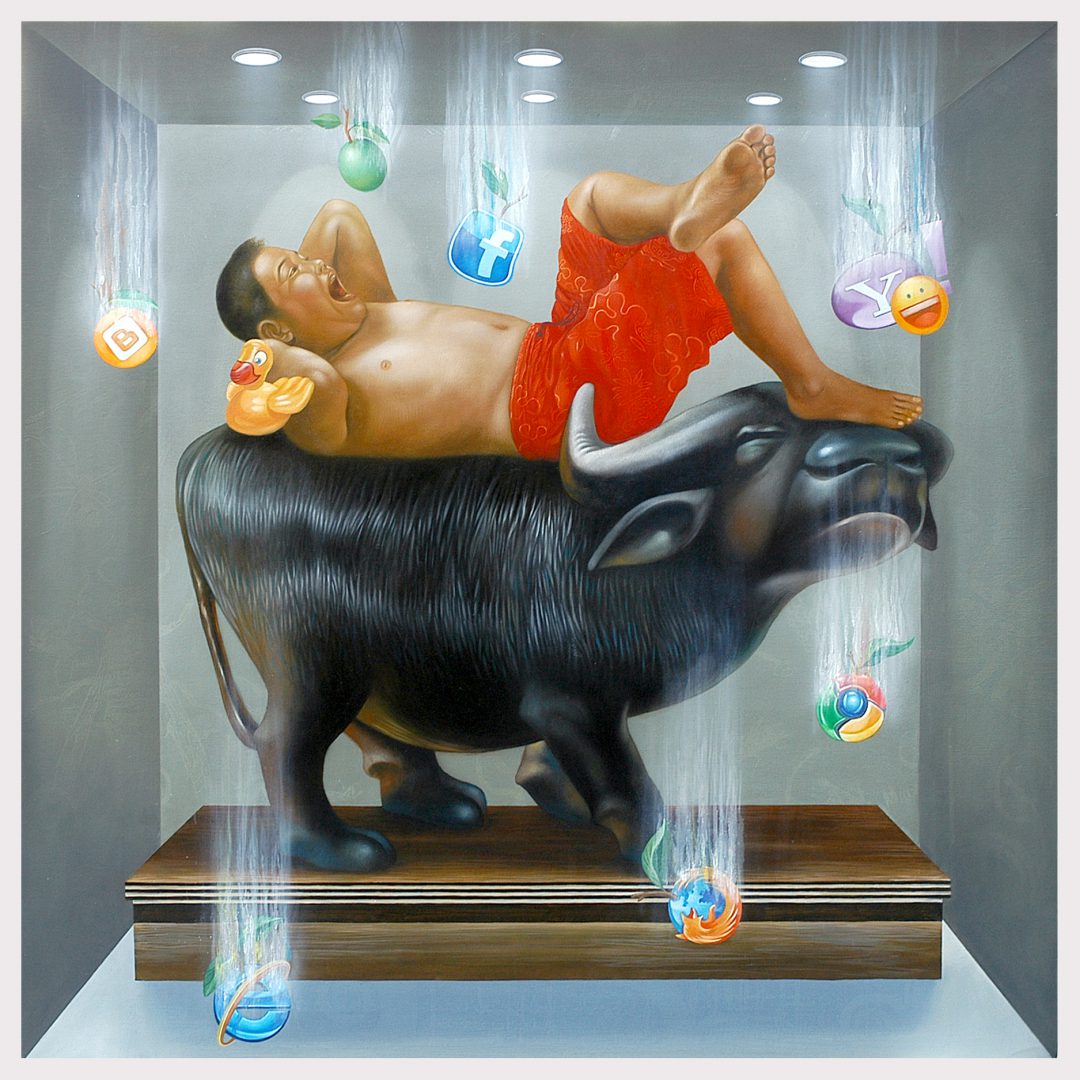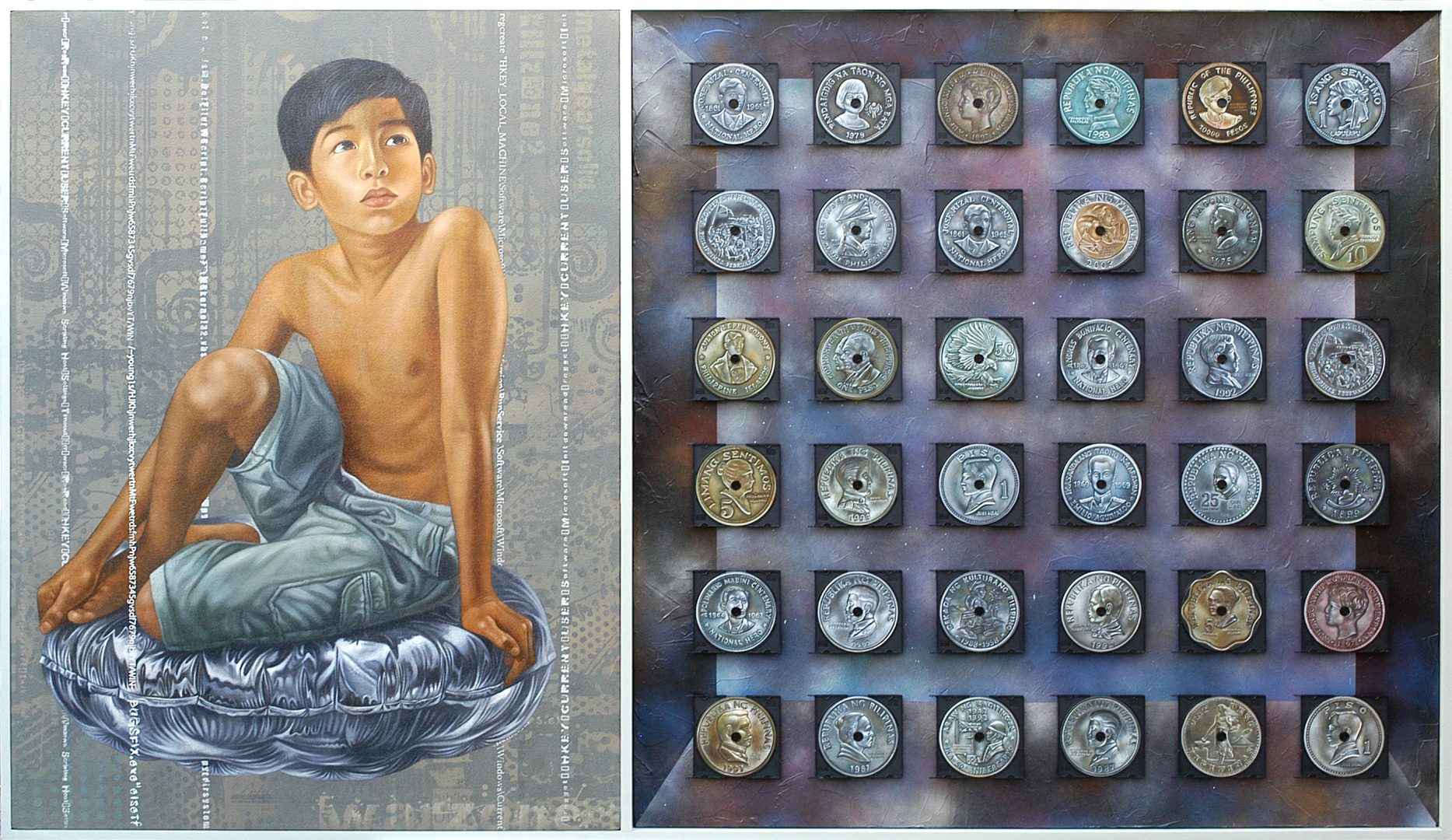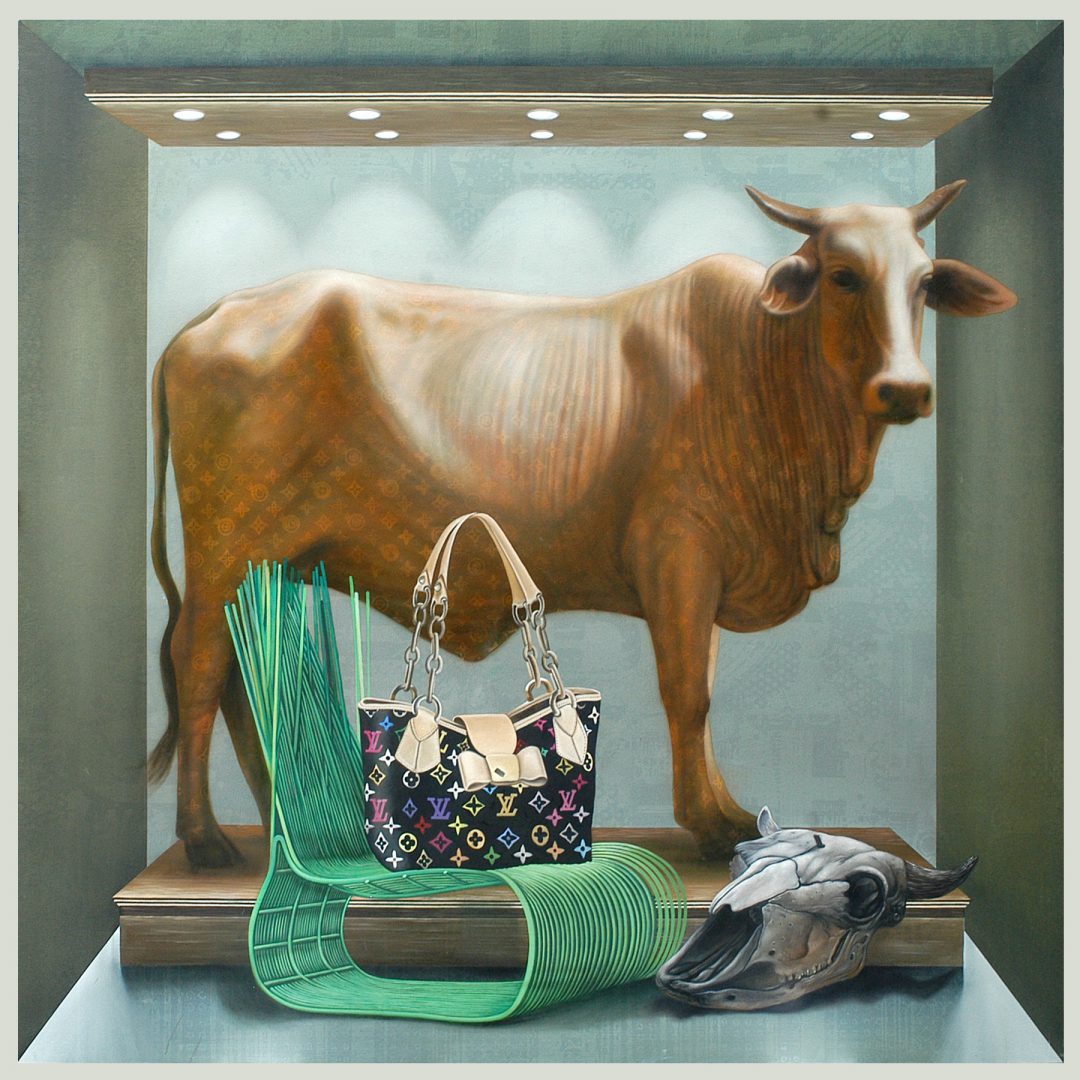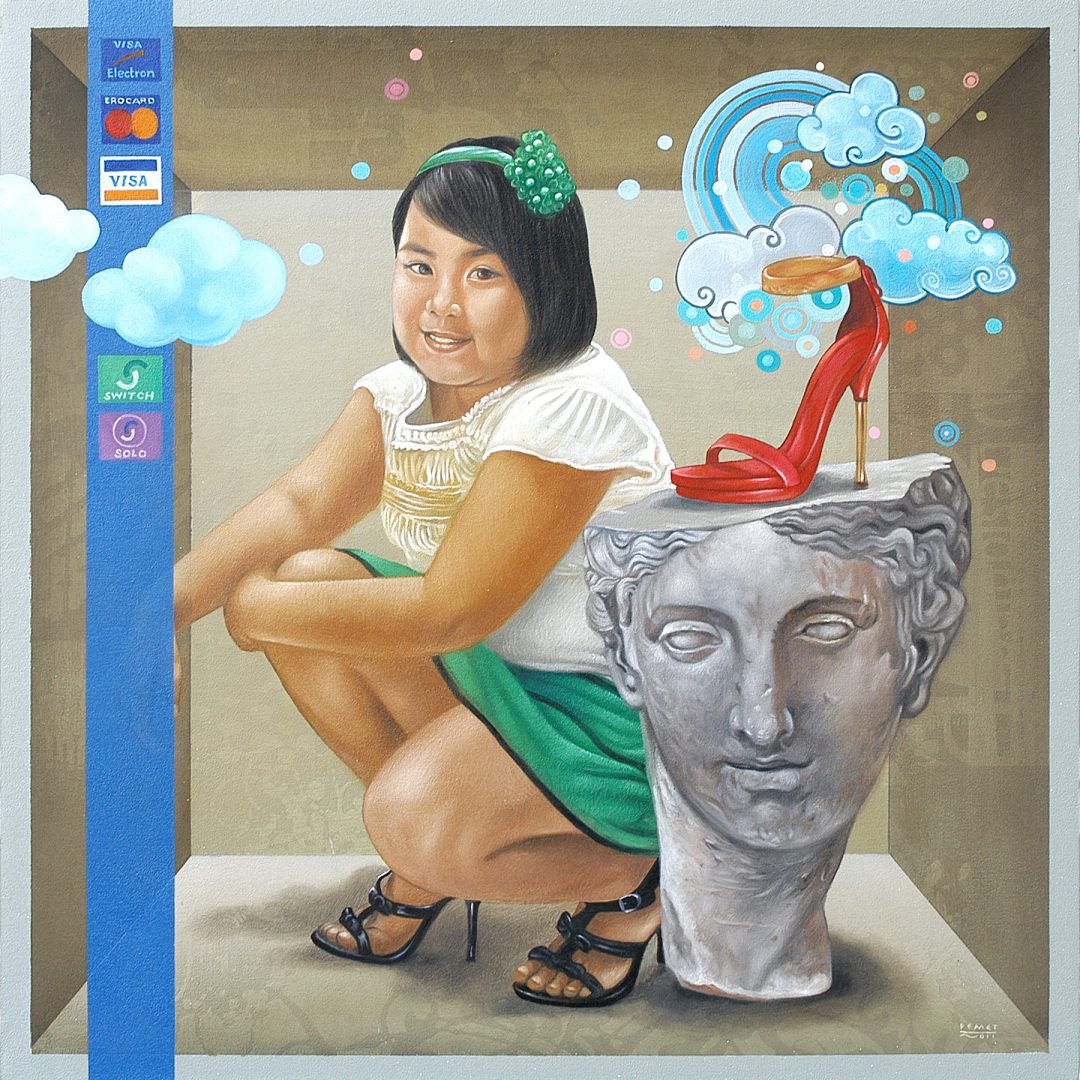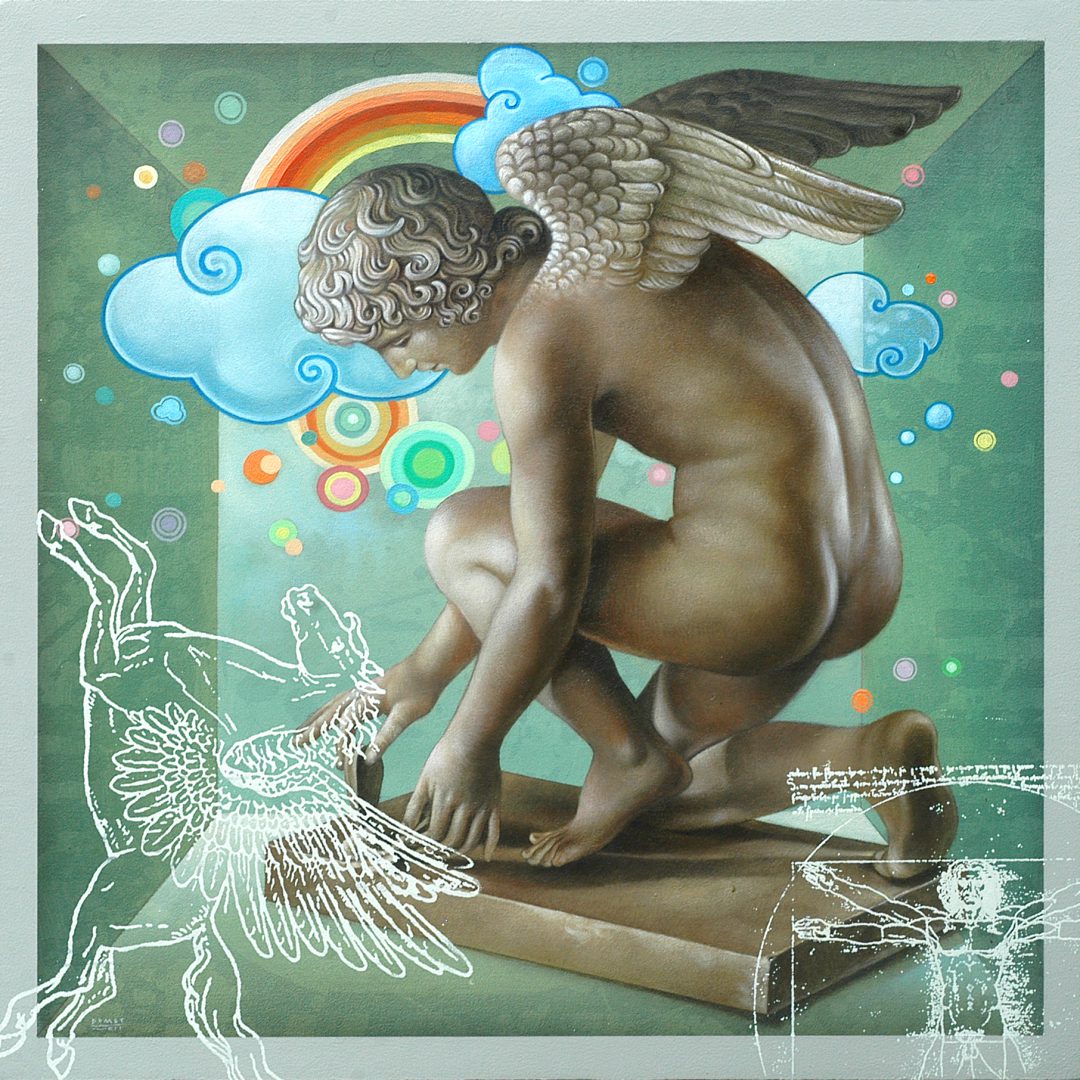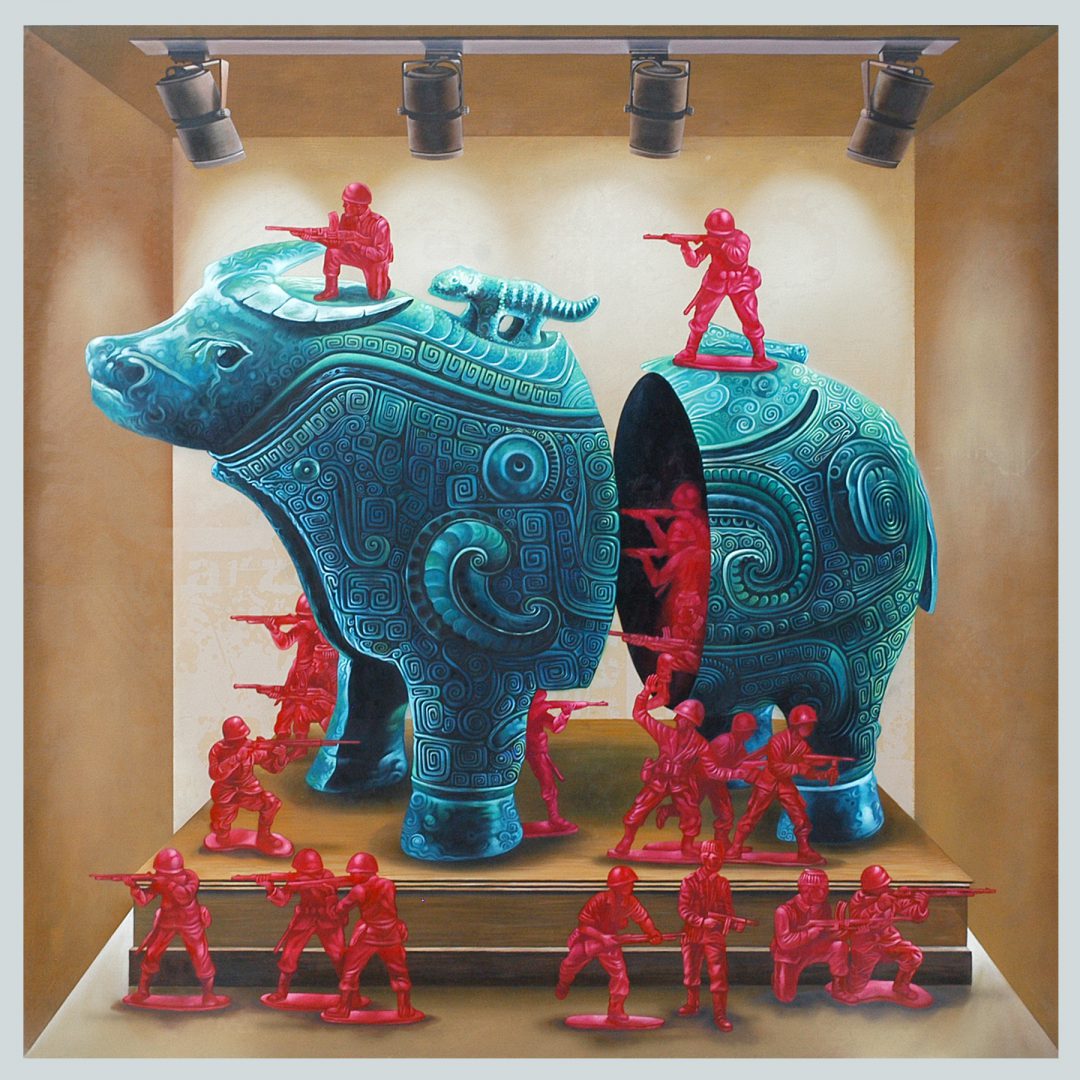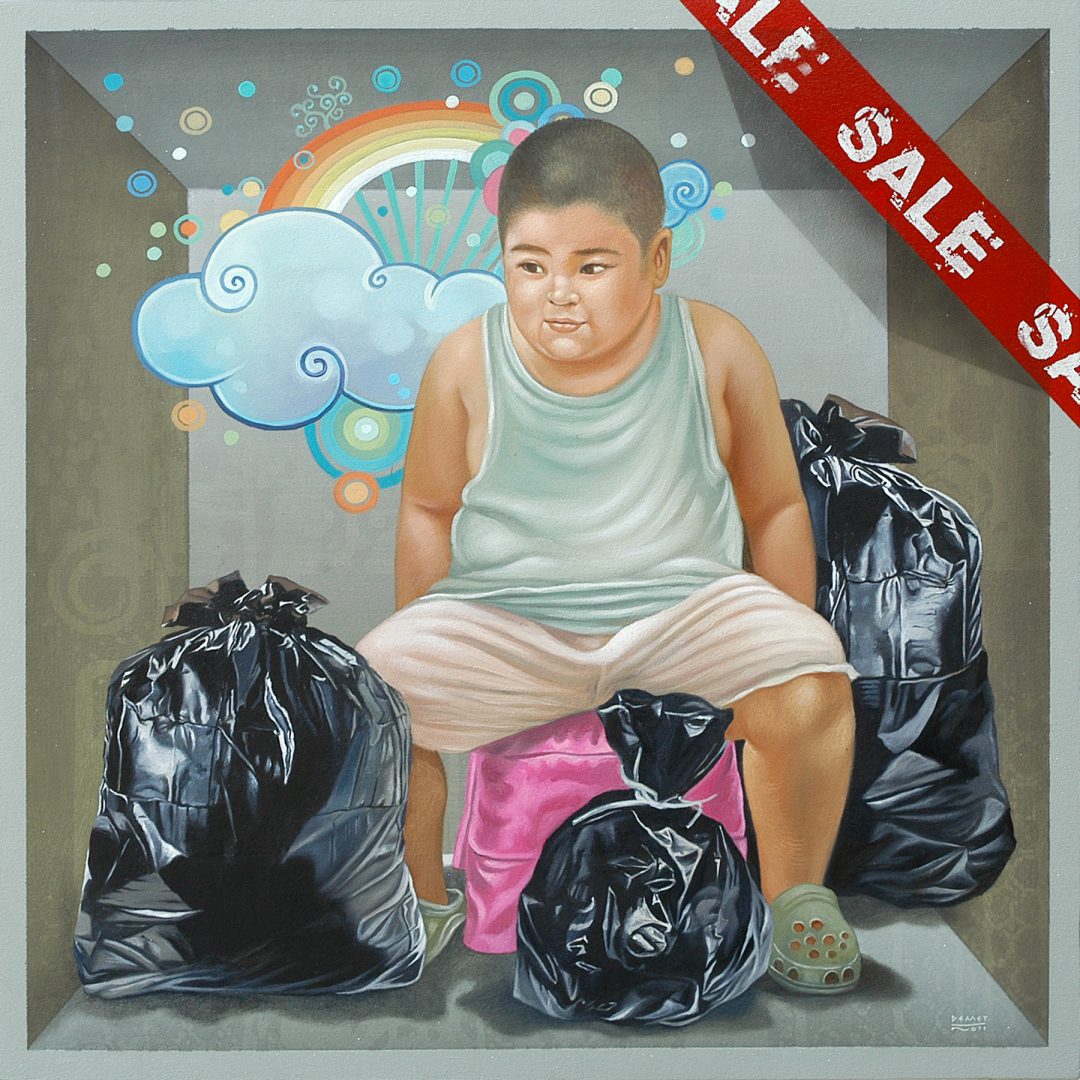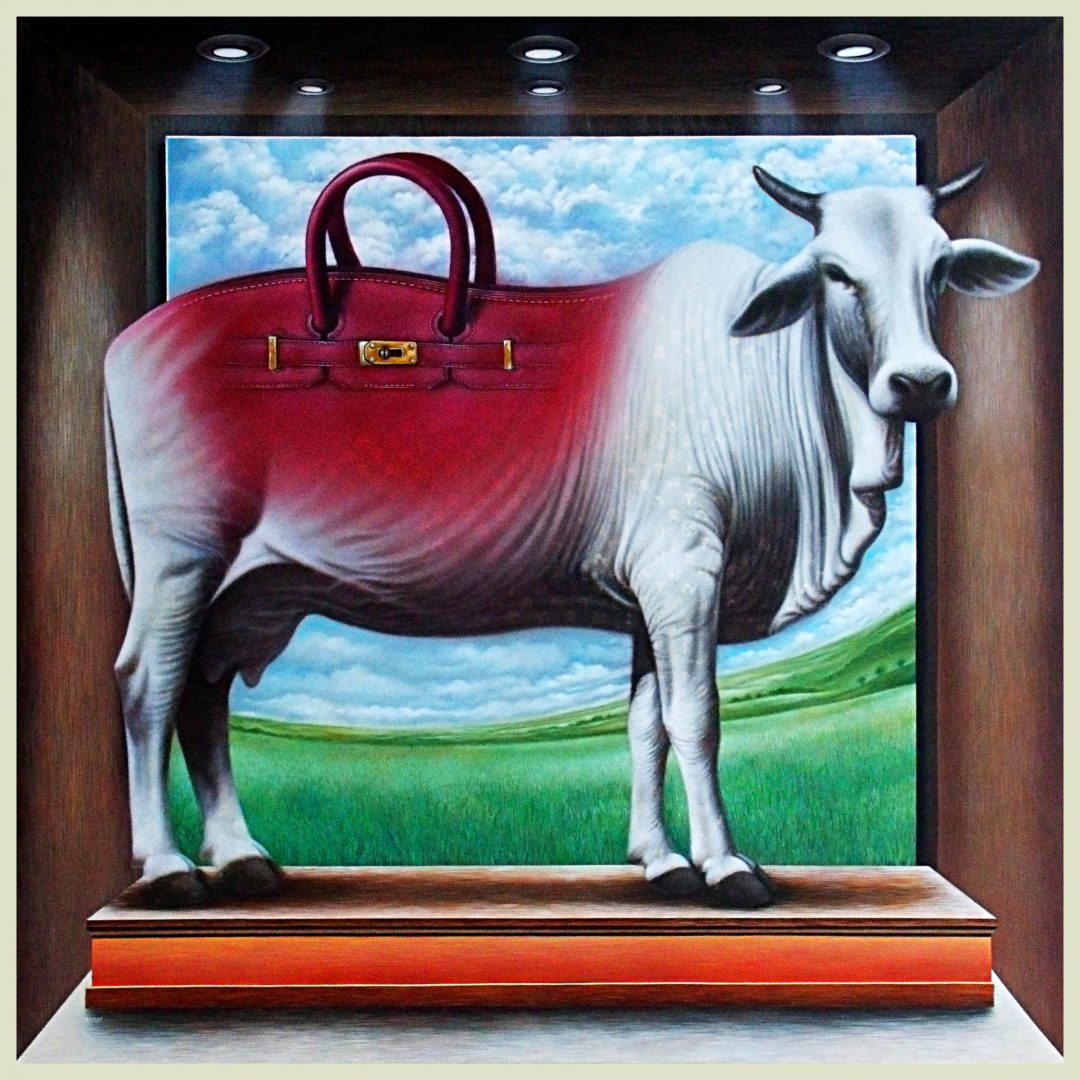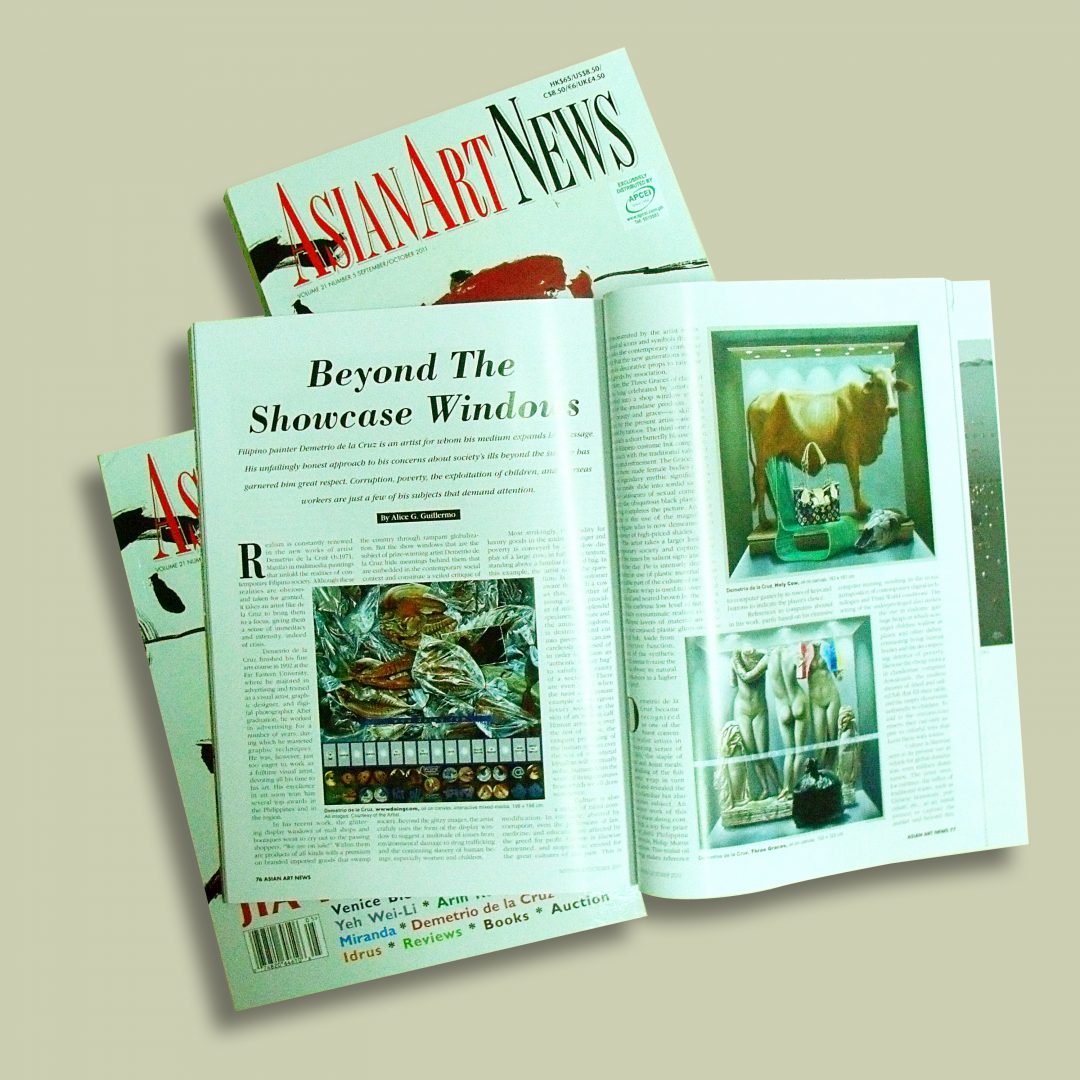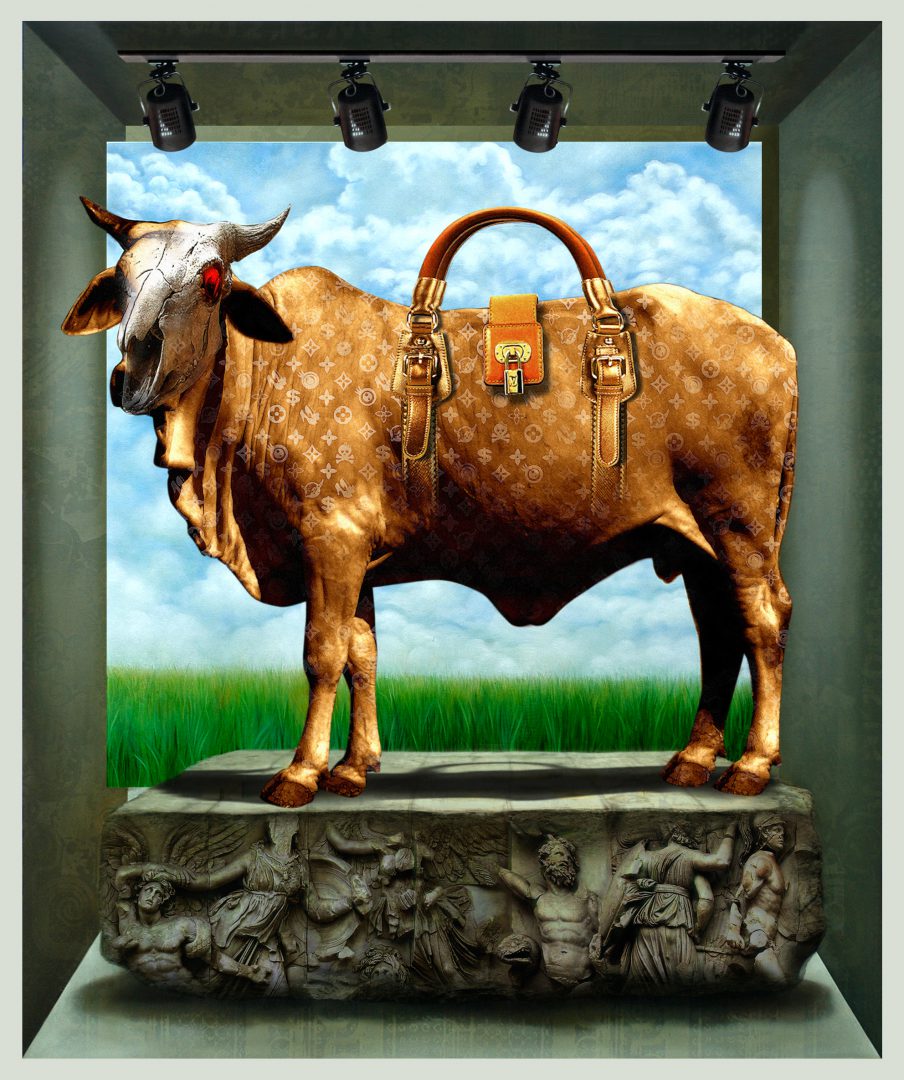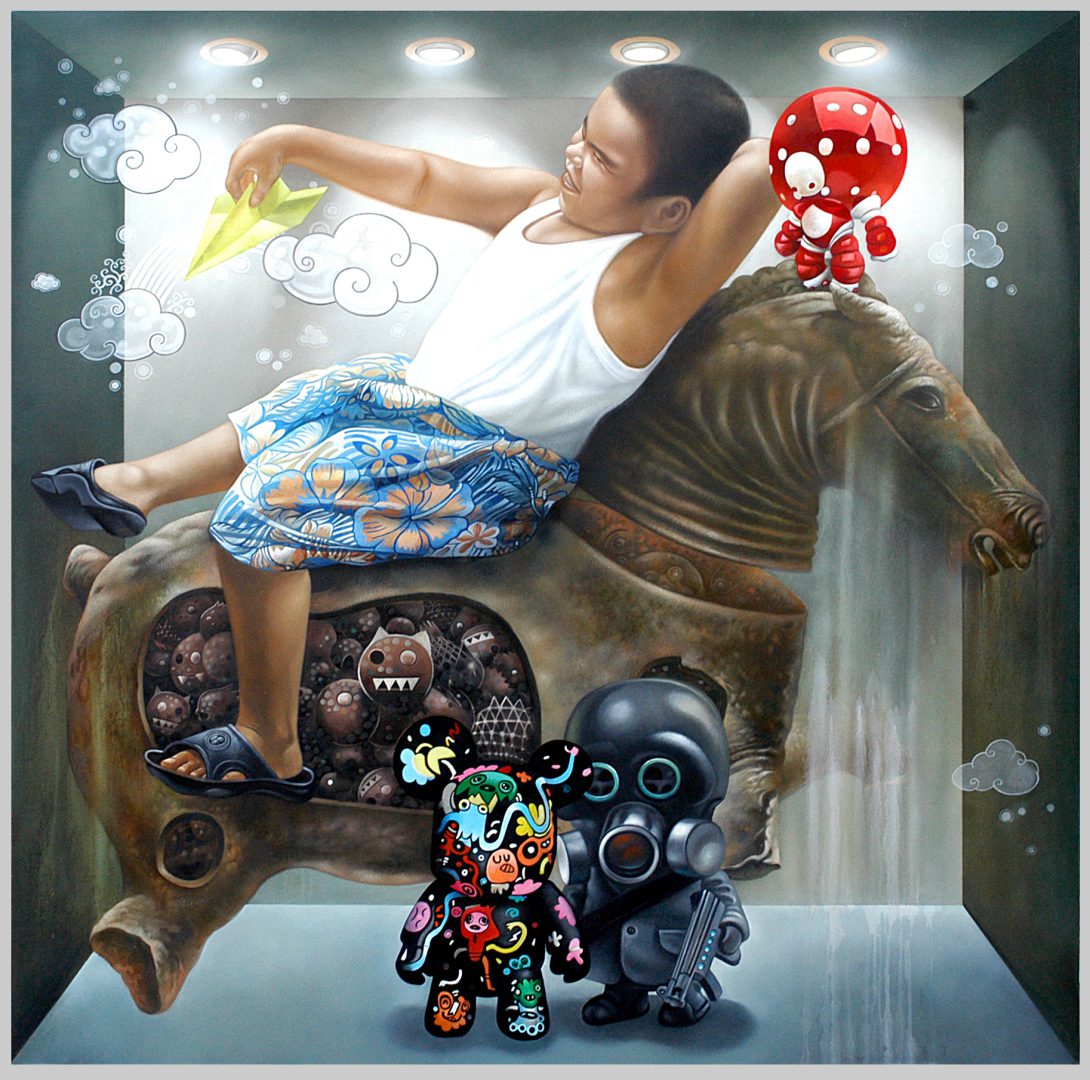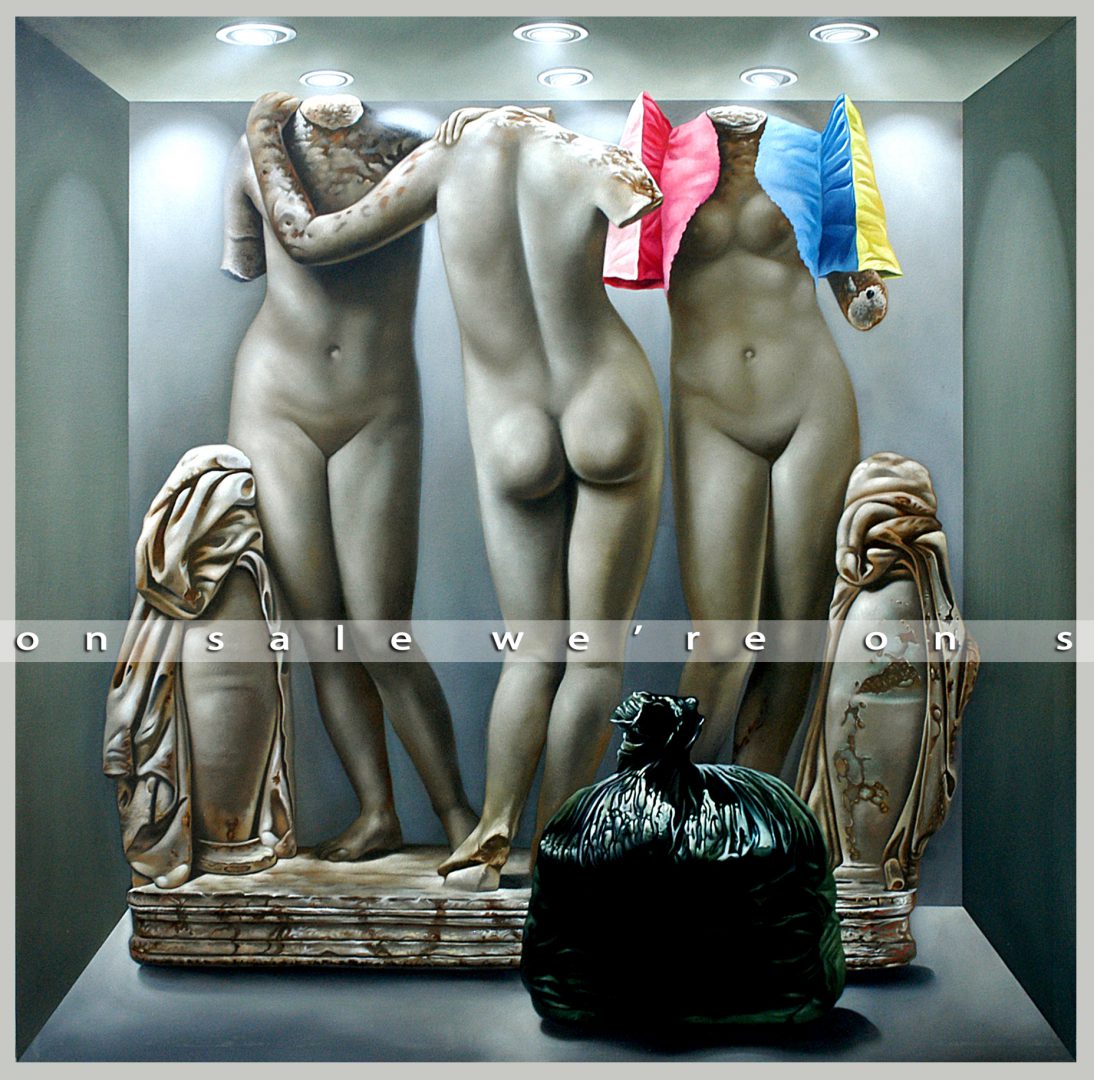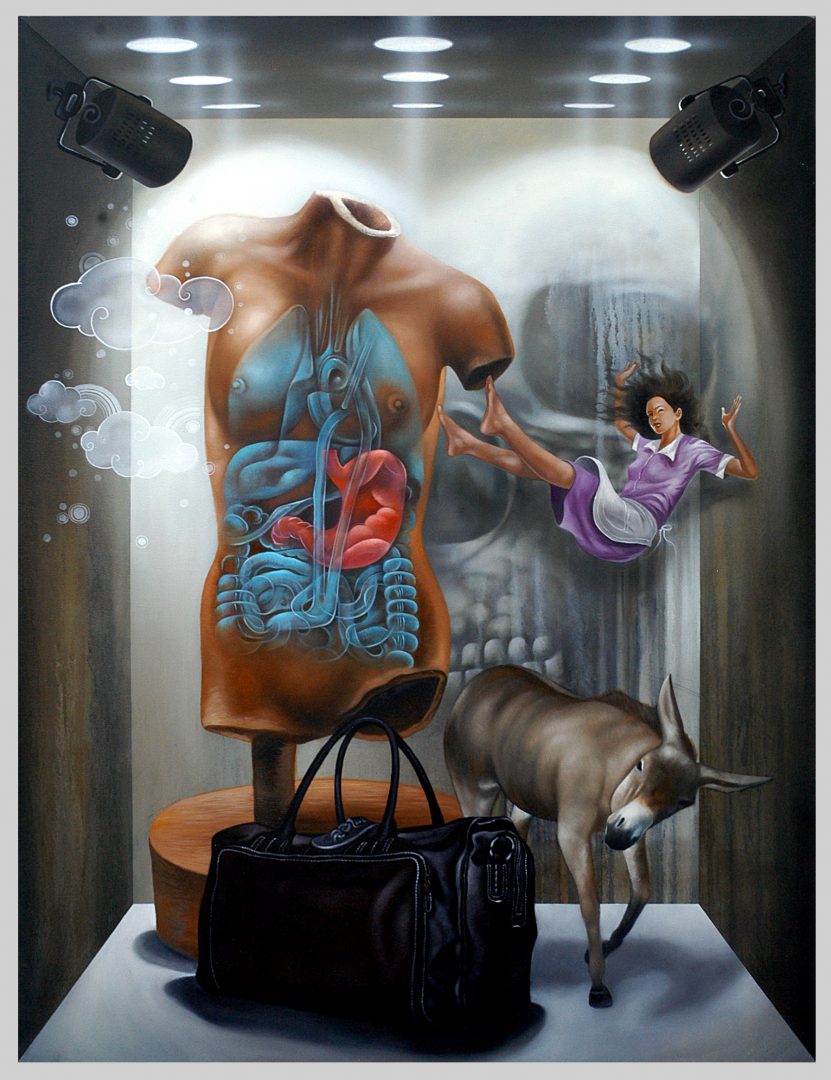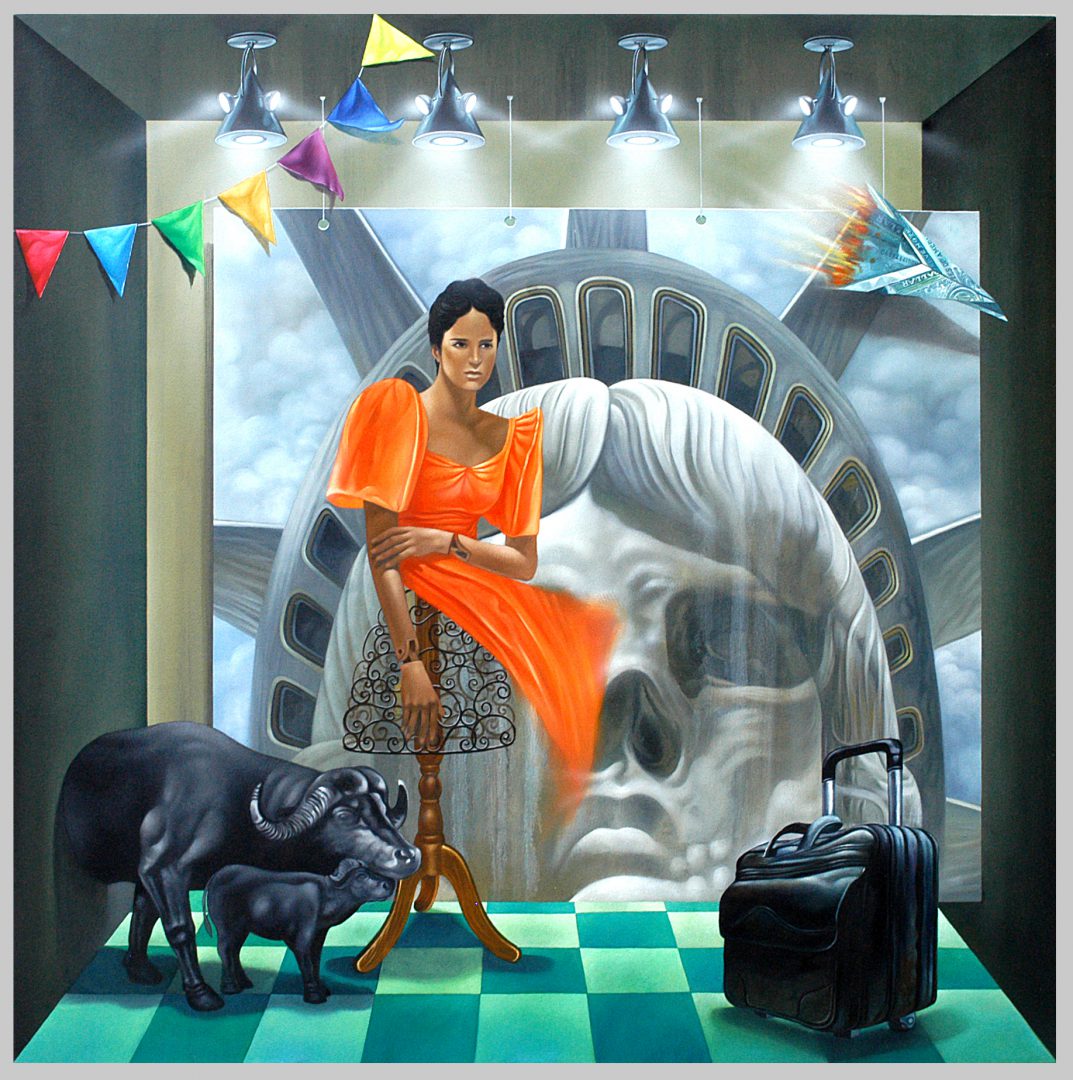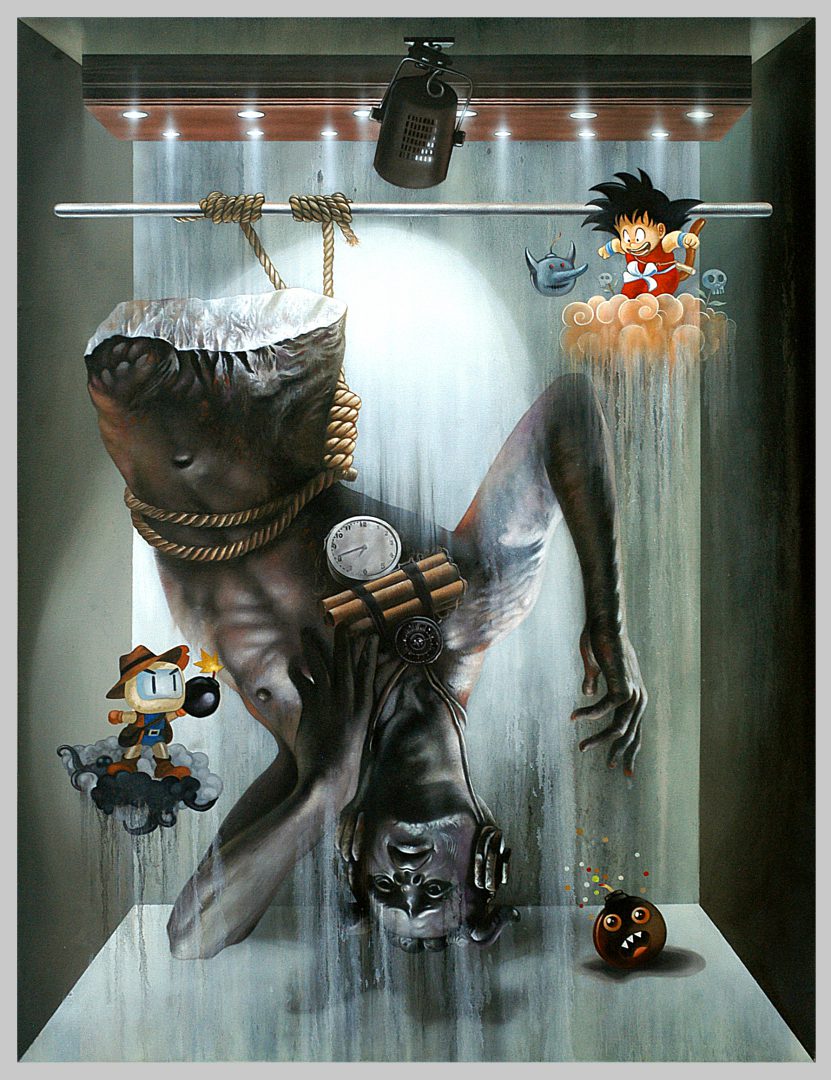BEYOND THE SHOWCASE WINDOWS
By Alice G. Guillermo
The glittering display windows of mall shops and boutiques seem to cry out “We are on sale!” to the passing shoppers. Within them are products of all kinds with a premium on branded imported goods that are flown to the country by rampant globalization. But the show windows that are the new subject of prizewinning artist Demetrio de la Cruz hide meanings behind them that are embedded in the contemporary social context and constitute a veiled critique of our society. Beyond the glitzy images, the artist craftily uses the display window to suggest a multitude of issues from environmental damage to drug trafficking and the sale of women’s bodies.
The avidity for luxury goods is conveyed by a window display of a large cow standing above a familiar branded bag. In this example, the artist raises a question: Is the customer aware that such a cow as this, a mother of young and a provider of milk, a splendid specimen of nature and the animal kingdom, is destroyed and cut into pieces, its carcass disposed of in order to fashion an “authentic leather bag” to satisfy the vanity of a socialite? There are even cases when the most consummate example of bourgeois luxury would be the skin of an unborn calf. Human arrogance over the rest of nature will eventually isolate humans from the world of living creatures from which we draw sustenance.
Culture is also a victim of rabid commodification. In our time, abetted by corruption, even the professions of law, medicine, and education are affected by the greed for profit. Culture is likewise demeaned, and respect has eroded for the great culture of the past. This is amply demonstrated by the artist in his use of classical icons and symbols which are brought into the contemporary context to the effect that the new generations simply see them as decorative props to raise the price of goods by association. Here, the Three Graces of Greek myth so long celebrated by artists are transported into a shop window among the rest of the mundane products. Their beauty and grace—so skillfully captured by the present artist—are now disfigured by tattoos. The farthest one on the right models a short butterfly blouse taken from our native costume but completely out of touch with native values of modesty and grace. The Graces have become mere nude female bodies bereft of their legendary mythic significations and thus easily slide into samples of girlie catalogues of females for sale. Tellingly, a black plastic garbage bag completes the picture. Another example is the use of the magnificent Apollo figure who is now demeaned into an endorser of high-priced shades.
Culture is likewise seen in its present use as vehicle for domination, even military domination. The artist sees, for instance, the influx of traditional wares, such as Chinese brassware, porcelain, etc. as a pretext to capture the market and beyond this, to set their foot on the Philippine economy. The elaborate figure from traditional art spills out an army of soldiers all set to dominate and conquer a weaker economy in de la Cruz’ work which serves as a warning.
But poverty is a constant factor in this alarming trend in commodifiction, not only of products, culture, the professions, but humans as well who stake their own persons and bodies as well. A work referring to drug mules demonstrates this with an anatomical painting of the passage of drugs within the body and beside it a young woman falling into the abyss. Blinded by the lure of big monetary rewards and by an “easy” escape from poverty, there are deluded women who make this risky choice, much to their regret. Related to this is the extreme case of suicide bombers who are promised money and material benefits for their bereaved family.
A much more common example is the sale of human labor to recruiters and foreign agents in order to work abroad, mainly as female domestic. Men likewise accept dirty, dangerous and difficult jobs to earn money for their family. These overseas contract workers were hailed as heroes by the past Arroyo government which could not provide gainful employment in the country. Yet, the social and human cost of leaving one’s family for years abroad taking c are of foreign children rather than one’s own is a tremendous price to pay as studies have shown. Instead of improving children’s lives, they have mostly resulted in demoralization and dysfunction. The artist shows a Filipina in native costume waiting for her turn to go abroad, baggage ready, to the USA symbolized by the Statue of Liberty. Will it fulfill its promise? Many Filipinos have always entertained the American dream, but will dream and reality coincide for the lowly overseas worker?
Another issue that stands out in his new series has to do with the formation of children and the influx of foreign toys that have long replaced traditional games. The artist strongly implies that these have the effect of warping children’s minds and eventually alienating them from the values of our society. They first began with Japanese militaristic robots that conveyed Japanese supremacy, then later proceeded to capture younger minds with Hello Kitty and the Pokemon set, now they have gone into KAWS of colorful vinyl toys which along with digital games cause addiction to games like a virus in the mind.
Demetrio de la Cruz has a remarkable way of putting across his message. With his painting skills, his show windows are like wrap-around three-dimensional boxes that contain ample display space for his figures that come together to convey meaning-- all accomplished by the medium of oil on canvas. The artist contributes a new perspective to realism in his unique manipulation of figure and space to tackle urgent contemporary issues.
In 2008, the artist was the Grand Prize Winner of the Lion’s Club on the spot Mural Painting Competition “Preserving the Environment”, in 2007, the Grand Prize Winner in the AAP National Art Competition; in 2006 Winner (top 5) in the Philip Morris Philippine Art Awards, in the same year Grand prized in the Daler-Rowny Art Competition. He has also won prizes in many other competitions.
Pinto Art Museum
11 - 28 June 2011
Address:
1 Sierra Madre St.
Grand Heights Rd
Antipolo Rizal
Philippines


